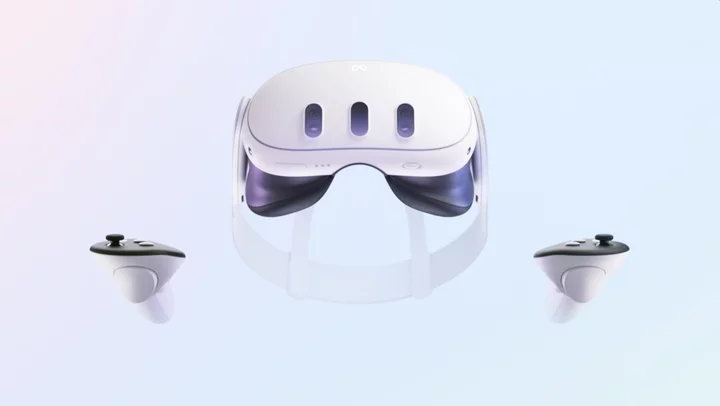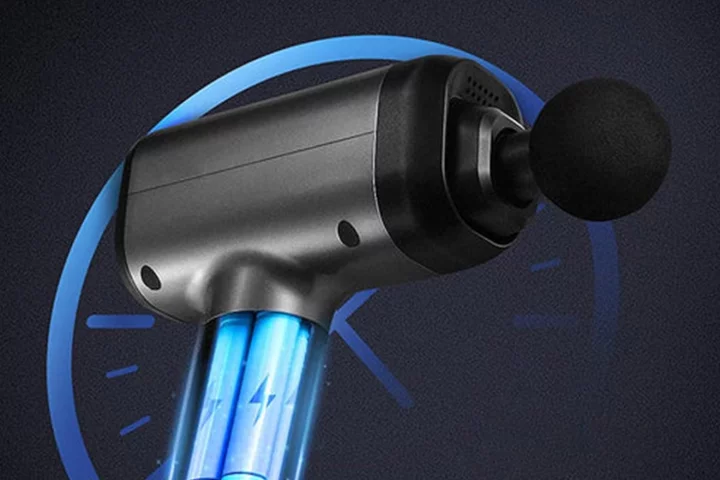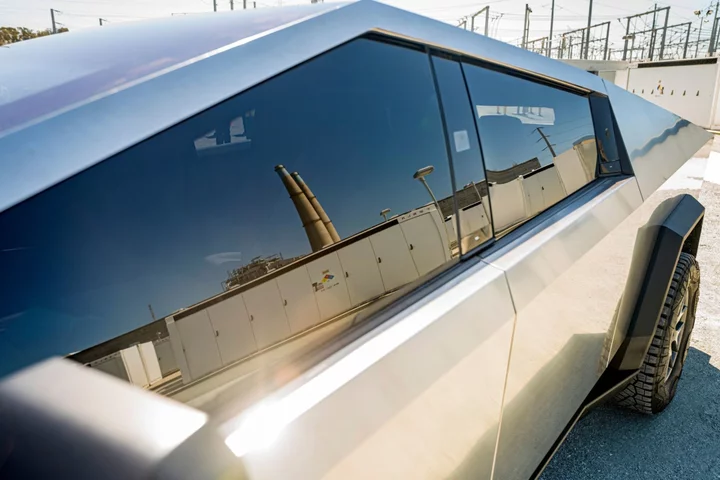Warning: This review discusses major world and gameplay elements of Tears of the Kingdom that were not in any of the trailers. If you don’t want to be spoiled, stop reading and just know that the game is great.
Early on in my 70 hours (and counting) with The Legend of Zelda: Tears of the Kingdom, I encountered a sequence that pretty thoroughly encapsulated what this game is all about.
It was, in essence, a very long platforming sequence. Link and an NPC companion (one of several you can have in this game) had to navigate their way through a gauntlet of sky islands and floating ships to gain access to a dungeon. It was a thrilling half hour or so of gameplay that involved finding creative ways to deal with cold weather, building hot air balloons, ascending through ceilings, and fusing swords to other swords to create longer, more powerful swords.
In so many ways, it resembled 2017’s seminal Breath of the Wild, and in so many other ways it didn’t. Tears of the Kingdom is still a chaotic physics playground, but it’s one that’s in some ways breezier and friendlier, and in other ways even more punishing than its predecessor. In certain respects it feels very familiar, and in others like a different kind of game altogether.
Most importantly, Tears of the Kingdom is comfortable not trying to one-up one of the greatest games of all time. Rather than reinventing the reinvention, this game builds on it in fascinating ways, playing with your affection for Breath of the Wild’s world while still finding ways to shock and surprise, both above and below Hyrule.
SEE ALSO: 'Final Fantasy XVI' wants to make you love action gamesYou think you know this game…
Look familiar? Credit: NintendoIn the opening hours of Tears of the Kingdom, I was struck by how similar it was to Breath of the Wild. A few hours into the game and I was hunting shrines, cooking food, running out of stamina, and repeatedly dying. It’s the first console Zelda game in nearly 25 years to have the same art style, same UI, and same protagonist as the previous game.
Reckoning with that took some adjustment, to be honest. It’s hard to shake the expectation that this game should revolutionize the open-world action-adventure genre (or reinvent the Zelda series) in the same way that Breath of the Wild did. I’m not sure that it will, and frankly I don’t think it’s even reasonable to expect that.
Nintendo hasn’t messed with the core loop this time around. You will still spend dozens of hours searching for shrines so you can upgrade your stamina meter. You will still have to sight-read mountains and cliffsides for valuable footholds as you attempt to scale them with your bare hands. And your best weapon will inevitably break in the middle of a fight, forcing you to use something you’d really rather not use.
There were certainly times early in my playthrough where I wondered when the surprises would show up. Breath of the Wild was all about the thrill of rounding a corner or cresting a hill to find something you didn’t expect. Now, you sorta know what to expect. Even with shrines taking on a new aesthetic and side quests being much more involved and interesting now, it doesn’t change that you’re still trying to solve a lot of the same problems as last time around.
At the start, Tears of the Kingdom even feels like a reaction to some players’ harshest criticisms of the previous game. There are new ways to deal with weapon durability and being unable to climb in the rain. Towers that launch Link into the sky make it much quicker to get around Hyrule and spot shrines. The main story will more or less hand you the gear you need to survive in harsh environments.
...But you don’t.
Ultrahand is a real game-changer. Credit: NintendoIt’s heartening, then, that Tears of the Kingdom does indeed find an identity and unique friction of its own. The nouns are the same, but the verbs are different. Very different, in exciting and inventive ways.
Link’s four new abilities (Fuse, Recall, Ascend, and Ultrahand) are the verbs, in this case, and I love them dearly. Fusing weapons is the aforementioned solution to the durability “problem,” as a fused weapon automatically resets and improves its durability. Ascend is a more hasty way to travel vertically than climbing, as long as a ceiling is available. Recall can be, too, as you can reverse time on objects in motion like falling sky rocks.
But Ultrahand is the wildest mechanical addition of all. It’s been marketed as a way to build vehicles, but being able to telekinetically move and attach any object with physics to any other object with physics has a profound effect on problem-solving.
Early on, I needed to get on top of a plateau whose walls were too icy to climb. Lacking an obvious solution, I cut down a few trees, attached the logs together end-to-end, and leaned it up against the icy wall in the only spot where the physics would keep it in place. Just like that, I had a makeshift staircase that only barely worked. I’m still not sure if that was the right way to solve that puzzle.
These four abilities work in concert to make the moment-to-moment action in Tears of the Kingdom stand out from one of the greatest games ever made. Using fusion to make arrows home in on enemies or make your shield explode when hit adds a ton of fun new layers to combat, and enemies can do it, too. Recall is also a silly way to mess with enemies who throw projectiles, and Ascend forces you to think about man-made structures and natural features more vertically.
This stuff rules. Credit: NintendoAnd all of that is before you even get to the vehicle construction. Building rickety contraptions out of spare parts found around the Hyrulean landscape is a delight. The developers have truly thought of everything, too. There are seemingly dozens of available parts that can do everything from power an airplane to create a trebuchet, and probably a lot of other things I never thought to do.
Vehicles, of course, also recontextualize the world in invigorating ways. Something that would’ve been flatly unreachable in Breath of the Wild is now just an airplane ride away. Building a crappy little airboat and piloting it down a river is a whole vibe, man. It’s just a groovy time to make the world’s worst little car, attach a laser beam to the front of it, and take it to the mean streets of Hyrule.
Oh, and bad guys use vehicles, too. That’s where things get really interesting — but I’ll leave it to you to see that for yourself.
Surprises above, below, and around Hyrule
As has already been revealed in marketing, Tears of the Kingdom reuses the same open world from Breath of the Wild. The Rito still live in the northwest, Gerudo Desert is still in the southwest, Death Mountain is still in the northeast, and so on. Every region has changed in substantial ways, but the basic geography and topography haven’t.
It’s impressive, then, that Hyrule feels like a very different place from how it was portrayed in Breath of the Wild. In that game, Hyrule was a kingdom held together by duct tape and dreams 100 years after a demon apocalypse. In Tears of the Kingdom, there’s a real spirit of community and construction.
Different races are working together to rebuild Hyrule, piece by piece. Construction parts litter the kingdom, filling the dual role of giving Link toys to play with and thematically representing the reconstruction efforts after the events of Breath of the Wild. Between that and the new companion mechanics I hinted at earlier, it’s a decidedly less lonely game than its older brother.
Skydiving is a fun new way of getting around. Credit: NintendoYou also know from the trailers that there are a bunch of sky islands above Hyrule now. From the marketing, you’d think that was the end of it. Indeed, the sky islands add an exciting new layer of exploration, with plenty of surprises to find up there. However, Nintendo very intentionally left something major out of those trailers.
Hyrule is now dotted with gloomy chasms that emanate an evil aura and descend deep into the earth. Dive down into one of these and you’ll find yourself in the Depths, a second open world that exists underneath the first open world. It’s almost the same size as the surface of Hyrule, but is filled with entirely new problems with entirely new solutions.
I suspect some players will hate The Depths. It’s terrifying down there. You can’t see anything unless you create light sources yourself. A goopy, omnipresent substance called “the Gloom” will lower your maximum health if you touch it. Almost every enemy will also do that if you get hit by their attacks. It sucks.
It’s also the best part of Tears of the Kingdom. If the surface of Hyrule represents comfort and familiarity, the Depths represent the opposite. Safety and sanctuary do exist down there, but only in limited quantities. The kind of exciting gameplay friction that defined Breath of the Wild, where you have to meticulously plot your way from point A to point B knowing that it might be uncomfortable, improvisational, and treacherous, is in full effect in the Depths. No amount of Breath of the Wild acumen will save you down there.
Friction makes fun
Climbing continues to be treacherous. Credit: NintendoThe Depths are emblematic of the kind of friction that made Breath of the Wild stellar, and keeps Tears of the Kingdom on the same trajectory. Enemies that can sap your max health, weapons that break more easily than before (unless you fuse them), and the fact that weight distribution matters in vehicle handling are all great examples of this.
Building a weak little airplane on a cliffside in the darkness of the Depths, only to immediately crash into something I couldn’t see because I forgot to put a light on the front of it? Or fusing a ruby to an arrow that somehow insta-kills both me and the enemy I fired it at? That’s the good stuff, man. It’s the spice that gives these games life.
This game and its world are so thoughtfully hand-crafted that it’d be easy for the developers to smooth over all the rough edges, but they didn’t. Crucially, it never feels unfair. There are more problems, but also more solutions. You can always cook a meal or find some armor or fuse some weapons until eventually you have a way out of whatever pit you’ve thrown yourself into.
Part of me wanted to ding Tears of the Kingdom for being so similar in structure and systems to its predecessor, at least in the opening hours. However, its capacity for surprise and discovery is still as potent as ever, just in different ways. It’s a joy to hop around Hyrule, finding out what’s happened to each of your favorite places, but it’s also a joy to dive into the Depths and encounter true terror.
The Legend of Zelda: Tears of the Kingdom may not be as transformative as Breath of the Wild was, but it doesn’t need to be. You still won’t find a more creative, hilarious, or straight-up weird sandbox anywhere.









